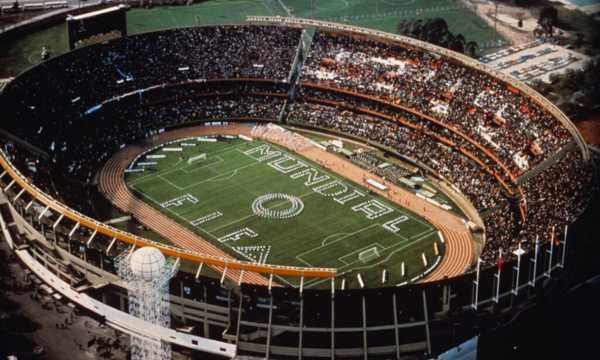Premier League: From the Greatest Champions to Unforgettable Records
The Premier League has transformed world football with its unique style of play and unparalleled competitiveness.
Ad
Considered by many as the most exciting league on the planet, it brings together the biggest stars and coaches in packed stadiums every week.
The intense duels, the unpredictability of the results, and the passion in the stands make the Premier League a complete spectacle.
Want to discover what makes this the most prestigious championship in Europe? In the following article, we will dive deep into the world of this English Championship.
The History and Creation of the Premier League
The Premier League was officially created on February 20, 1992, when the clubs of the English First Division decided to break away from the Football League.
This historic split was mainly motivated by financial issues and the desire to modernize English football.
The big clubs sought greater autonomy to negotiate their own television broadcasting rights.
Before the Premier League, English football faced serious infrastructure problems and disagreements in the stadiums.
With the financial support of Sky Sports, the Premier League inaugurated a new era in English football.
The first season (1992/93) featured 22 clubs, later reduced to 20 in 1995.
Manchester United, under the command of Sir Alex Ferguson, won the first title of the new league, establishing its initial dominance.
The transformation was immediate, and the commercial success exceeded all expectations, setting a new standard for football leagues around the world.
The competition quickly became synonymous with high-quality football and global entertainment.
All the Champions of the Premier Era
Manchester United dominated the early years of the Premier League under the command of the legendary Sir Alex Ferguson with an impressive 13 titles.
Their dominance would only be consistently challenged after the Scottish coach’s retirement in 2013.
Chelsea revolutionized the tournament in 2003 when it was acquired by Russian billionaire Roman Abramovich. With massive investments in elite players and coaches like José Mourinho, the Blues won five titles.
The rise of Manchester City transformed the Premier League landscape in the last decade with the acquisition of the club by the Abu Dhabi United Group in 2008.
Under the command of Pep Guardiola, the club set records and won multiple consecutive titles, redefining the standard of excellence in the league. List of Champions:
- Manchester United (13 titles)
- Manchester City (7 titles)
- Chelsea (5 titles)
- Arsenal (3 titles)
- Liverpool (1 title)
Points System and Excitement: Understanding the Tournament Format
During the tournament, teams face each other twice during the season, adopting a points system.
There are 38 thrilling rounds that determine the English champion without the need for playoffs or knockout stages.
As in most competitions, the scoring system works as follows: 3 points for a win, 1 point for a draw, and no points for a loss.
The Premier League season usually starts in August and ends in May of the following year.
During this period, teams play in the middle of the week and on weekends, balancing the calendar with other domestic and European competitions.
Boxing Day (December 26) is a traditional match date that attracts a huge audience.
In case of a tie in points at the end of the season, the tiebreaker criteria follow a clear order.
First, goal difference is observed, then goals scored, and if necessary, head-to-head results. Rarely used, the last resort would be a tiebreaker match at a neutral venue.
The format of the English tournament favors regularity and consistency throughout the entire season.
Teams, Promotion, and Relegation
The Premier League maintains the traditional English system of promotion and relegation, a fundamental characteristic of European football.
The three teams with the worst campaign at the end of the season are relegated to the Championship (second division).
In contrast, the top two teams in the Championship are automatically promoted to the elite of English football.
The third team promoted to the Premier League is determined through exciting playoffs. The teams that finish between third and sixth place in the Championship compete in a knockout mini-tournament, with semifinals and a final at Wembley.
This “£180 million match” is considered the most valuable game in world football due to the financial prize of promotion.
Traditional big clubs have already experienced the drama of relegation, such as Leeds United, Newcastle, Aston Villa, and Nottingham Forest.
The dynamism of the tournament is ensured by this promotion and relegation system, maintaining competitiveness and renewing the participants each season.
Breaking Records: Unforgettable Premier League Records
The Premier League has accumulated impressive records in its more than 30 years of history.
Pep Guardiola’s Manchester City set the mark of 100 points in the 2017/18 season, known as the “Centurions.” This team also recorded 32 wins in a single season, demonstrating undeniable dominance.
The historic top scorers are led by Alan Shearer with an incredible 260 goals. Harry Kane and Wayne Rooney complete the podium in this prestigious list.
Thierry Henry holds the record for most assists, proving that the Frenchman was much more than just a lethal finisher.
The invincibility record belongs to Arsenal’s “Invincibles” who completed the 2003/04 season with 49 games unbeaten.
This extraordinary feat by Arsène Wenger’s team remains unique in the modern era of the tournament and may never be matched.
The competitiveness of the Premier League is evidenced by the fact that only seven different clubs have won the title in more than three decades.
The Premier League Trophy and Its Significance
The Premier League trophy is a work of art designed by Royal Jewellers Asprey of London.
Weighing an impressive 25.4 kilograms and measuring 76 centimeters in height, it is made of sterling silver and malachite, a green stone representing the football field.
Its base contains a golden band with the names of the champion clubs engraved for posterity.
The iconic design of the trophy features a golden body with two lions on each side, representing the courage and strength of English football.
At the top, a golden crown symbolizes sporting excellence and the prestige of the competition. This trophy has become one of the most recognizable in world sports.
Interestingly, there are three identical versions of the Premier League trophy: the original that remains with the league, a replica presented to the season’s champion, and a third kept in reserve.
When a club wins the title, the trophy is meticulously decorated with ribbons in the champion team’s colors for the award ceremony.
For players and fans, lifting this symbol of excellence represents the pinnacle of English football and the reward for nine months of dedication and overcoming.

Premier-League-trophy-(Source-Google)
Why the Premier League Conquered the World
Unlike other European leagues, the English championship invested heavily in global television distribution since the early 2000s.
Today, the games are broadcast to more than 200 countries, reaching a potential audience of 4.7 billion people. The technical quality and intensity of the matches are often cited as differentiators by international fans.
The fast pace, fewer interruptions, and the offensive philosophy of many teams provide a more dynamic and exciting spectacle.
Each game can offer impressive twists, regardless of the teams’ position in the table.
Cultural diversity also contributes to its global popularity. Players from more than 60 different nationalities compete in the league, creating identification with fans from all continents.
Discover the Universe of Fantasy Premier League (FPL)
The Fantasy Premier League (FPL) has become a cultural phenomenon associated with the Premier League, bringing together more than 11 million players worldwide.
In this free game, participants build virtual teams with real players from the English league, accumulating points based on these athletes’ performances in official championship matches.
The game’s mechanics linked to the tournament are simple: each participant receives a virtual budget to hire 15 players (2 goalkeepers, 5 defenders, 5 midfielders, and 3 forwards).
Scores are based on various factors such as goals, assists, clean sheets, cards, and the bonus of the best player of the match.
FPL intensifies fans’ involvement with the tournament as it encourages following all games and teams, not just the one they traditionally support.
Many fans watch matches they wouldn’t normally watch just to follow the performance of players on their fantasy team.
The community around FPL has created its own ecosystem with podcasts, specialized websites, social media accounts, and even experts offering tips and strategies.
For many, the game has become as important as the actual Premier League results, adding an extra layer of engagement with the English championship.
Final Considerations
The balance between the traditional values of English football and constant modernization has allowed the Premier League to adapt to changes in the sport and society.
Packed stadiums, passionate fans, and the intensity of matches remain the heart of the competition, even with all the technological and commercial evolution.
Whether for the impressive records, inspiring stories like Leicester City’s, or the rivalry between the giants, the majestic English tournament continues to reinvent itself each season.
And this is the true magic of the competition: its ability to unite, thrill, and surprise, week after week, season after season.
FAQ
1. What is the “Big Six” of the Premier League?
2. How does qualification for European tournaments via the Premier League work?
3. When did Leicester City’s miracle in the Premier League occur?
4. How does VAR work in the Premier League?
What is the largest stadium in the Premier League currently?
 Best Apps and Platforms to Watch AFCON 2025 Live
Best Apps and Platforms to Watch AFCON 2025 Live
AFCON 2025 excitement is here! With the right apps and platforms, you can watch every game live without missing a moment. Ad AFCON is about to […]
Keep reading Global Giants: Fascinating Facts About Biggest Football Stadiums
Global Giants: Fascinating Facts About Biggest Football Stadiums
Do you know the secrets behind the largest football stadiums? Keep reading for details! Ad Curious to find out what makes biggest football stadiums so unique? […]
Keep reading Best Apps with Live Football to Watch Anywhere
Best Apps with Live Football to Watch Anywhere
Discover the following apps to watch live football on your cell phone, whether Android or iOS. Ad With modern apps, you can follow your club, league, […]
Keep reading